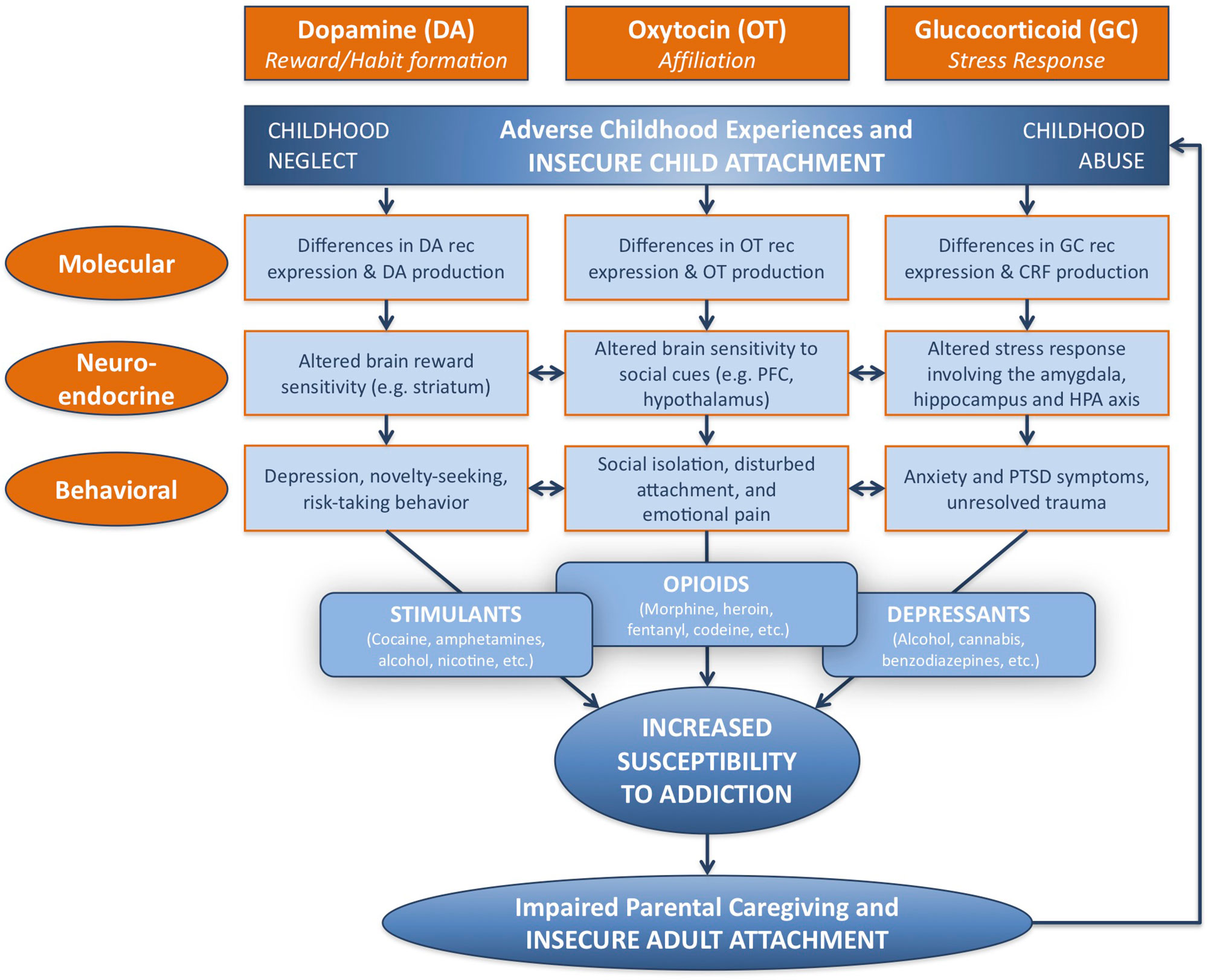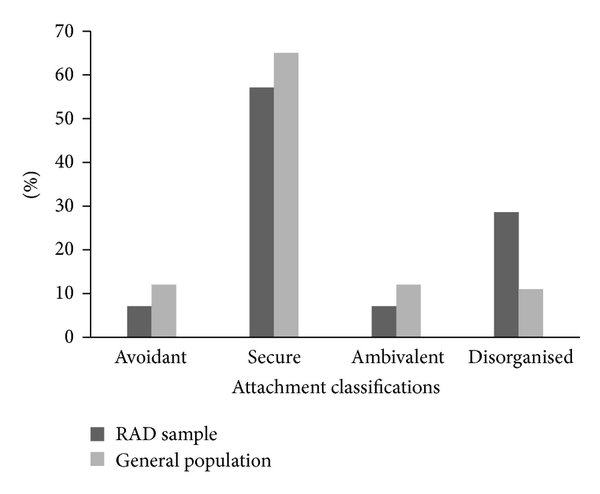Reactive Attachment Disorder, often abbreviated as RAD, is a complex and challenging condition that affects the emotional and social development of children. It arises when a child fails to form healthy emotional bonds with their caregivers during early childhood. This disorder can have profound effects on a child’s ability to trust others, regulate emotions, and develop meaningful relationships. In this article, we will explore the causes, symptoms, and treatment options for Reactive Attachment Disorder to provide a comprehensive understanding of this condition.

What Is Reactive Attachment Disorder?
Reactive Attachment Disorder is a rare but serious condition that typically manifests in early childhood. It occurs when a child does not receive consistent care, love, or attention from caregivers during critical developmental stages. As a result, the child struggles to form secure attachments with others, which can lead to a range of emotional and behavioral challenges.
This disorder is most commonly observed in children who have experienced neglect, abuse, or frequent changes in caregivers, such as those in foster care or orphanages. The lack of stable and nurturing relationships during infancy and early childhood disrupts the natural process of attachment formation, leading to the development of this disorder.
Causes of Reactive Attachment Disorder
The primary cause of Reactive Attachment Disorder lies in the absence of consistent, loving, and responsive caregiving during a child’s early years. Several factors can contribute to this disruption in attachment:
Neglect
- Physical Neglect: When a child’s basic needs for food, shelter, and hygiene are not met consistently.
- Emotional Neglect: A lack of affection, comfort, and emotional support from caregivers.
Abuse
- Physical Abuse: Repeated exposure to violence or harm by caregivers can prevent a child from feeling safe and secure.
- Emotional Abuse: Constant criticism, rejection, or verbal hostility can damage a child’s ability to trust others.
Frequent Changes in Caregivers
Children who experience multiple placements in foster care, orphanages, or adoptive homes may struggle to form stable attachments due to the lack of continuity in caregiving.
Institutionalization
Children raised in institutional settings, such as orphanages, where individualized attention is limited, are at a higher risk of developing attachment issues.
Symptoms of Reactive Attachment Disorder
The symptoms of Reactive Attachment Disorder can vary depending on the child’s age, environment, and severity of the condition. However, there are some common signs that caregivers and professionals should be aware of:
Emotional Withdrawal
Children with this disorder often appear emotionally detached and unresponsive to caregivers. They may show little interest in interacting with others and avoid physical contact, even when comforted.
Lack of Trust
These children may struggle to trust adults or authority figures, making it difficult for them to seek help or rely on others for support.
Difficulty Expressing Emotions
They may have trouble identifying or expressing their feelings, leading to inappropriate emotional responses in various situations.
Behavioral Challenges
- Aggression: Some children may act out aggressively toward others, especially when they feel threatened or insecure.
- Indifference: Others may display an unusual lack of concern about their surroundings or the well-being of others.
Poor Social Skills
Children with this disorder often struggle to form friendships or engage in cooperative play with peers. They may also exhibit controlling or manipulative behaviors in relationships.
Diagnosing Reactive Attachment Disorder
Diagnosing Reactive Attachment Disorder requires a thorough evaluation by a qualified mental health professional. The diagnostic process typically involves:
Clinical Interviews
A psychologist or psychiatrist will conduct interviews with the child and caregivers to gather information about the child’s history, behavior, and relationships.
Observation
Professionals may observe the child’s interactions with caregivers and peers to assess their attachment patterns and social skills.
Developmental History
A detailed review of the child’s early life experiences, including any instances of neglect, abuse, or caregiver changes, is essential for accurate diagnosis.
Ruling Out Other Conditions
It is important to differentiate Reactive Attachment Disorder from other conditions, such as autism spectrum disorders or anxiety disorders, which may share similar symptoms.
Treatment Options for Reactive Attachment Disorder
Treating Reactive Attachment Disorder requires a comprehensive and individualized approach that addresses the child’s emotional, behavioral, and relational needs. Early intervention is crucial to improving outcomes and helping the child develop healthier attachment patterns.
Therapy
Several therapeutic approaches can be effective in treating this disorder:
- Attachment-Based Therapy: This therapy focuses on strengthening the bond between the child and their primary caregiver through structured activities and guided interactions.
- Play Therapy: Play therapy allows children to express their emotions and experiences in a safe and supportive environment, helping them process trauma and build trust.
- Family Therapy: Involving the entire family in therapy can improve communication, resolve conflicts, and create a more nurturing home environment.
Parenting Education
Caregivers play a vital role in the treatment process. Parenting education programs can teach caregivers how to provide consistent, responsive, and nurturing care to meet the child’s emotional needs.
Medication
While there is no specific medication for Reactive Attachment Disorder, medications may be prescribed to address co-occurring conditions, such as anxiety or depression, that can exacerbate symptoms.
School-Based Interventions
Collaboration with teachers and school counselors can help create a supportive learning environment for the child. Behavioral interventions and social skills training can also be incorporated into the child’s daily routine.
Challenges in Treating Reactive Attachment Disorder
Despite the availability of effective treatments, addressing Reactive Attachment Disorder can be challenging for several reasons:
Complexity of the Condition
This disorder often coexists with other mental health issues, such as post-traumatic stress disorder or attention deficit hyperactivity disorder, making it difficult to isolate and treat specific symptoms.
Resistance to Treatment
Children with this disorder may resist forming attachments or engaging in therapy due to past experiences of neglect or abuse.
Need for Long-Term Support
Successful treatment requires ongoing commitment from caregivers, therapists, and other support systems, as progress can be slow and incremental.
Preventing Reactive Attachment Disorder
Prevention is key to reducing the incidence of Reactive Attachment Disorder. By providing children with stable, loving, and responsive caregiving from an early age, the risk of developing this disorder can be significantly minimized.
Early Intervention
Identifying and addressing potential attachment issues early can prevent the escalation of symptoms and promote healthy development.
Support for Caregivers
Offering resources and support to caregivers, particularly those in high-risk situations, can help them provide the nurturing environment children need.
Community Programs
Initiatives that promote awareness and education about attachment and child development can empower families and communities to create supportive environments for children.
Conclusion
Understanding Reactive Attachment Disorder is essential for parents, caregivers, educators, and mental health professionals who work with children. By recognizing the causes, symptoms, and treatment options for this condition, we can better support children in overcoming the challenges associated with it and help them build healthier, more fulfilling lives.





